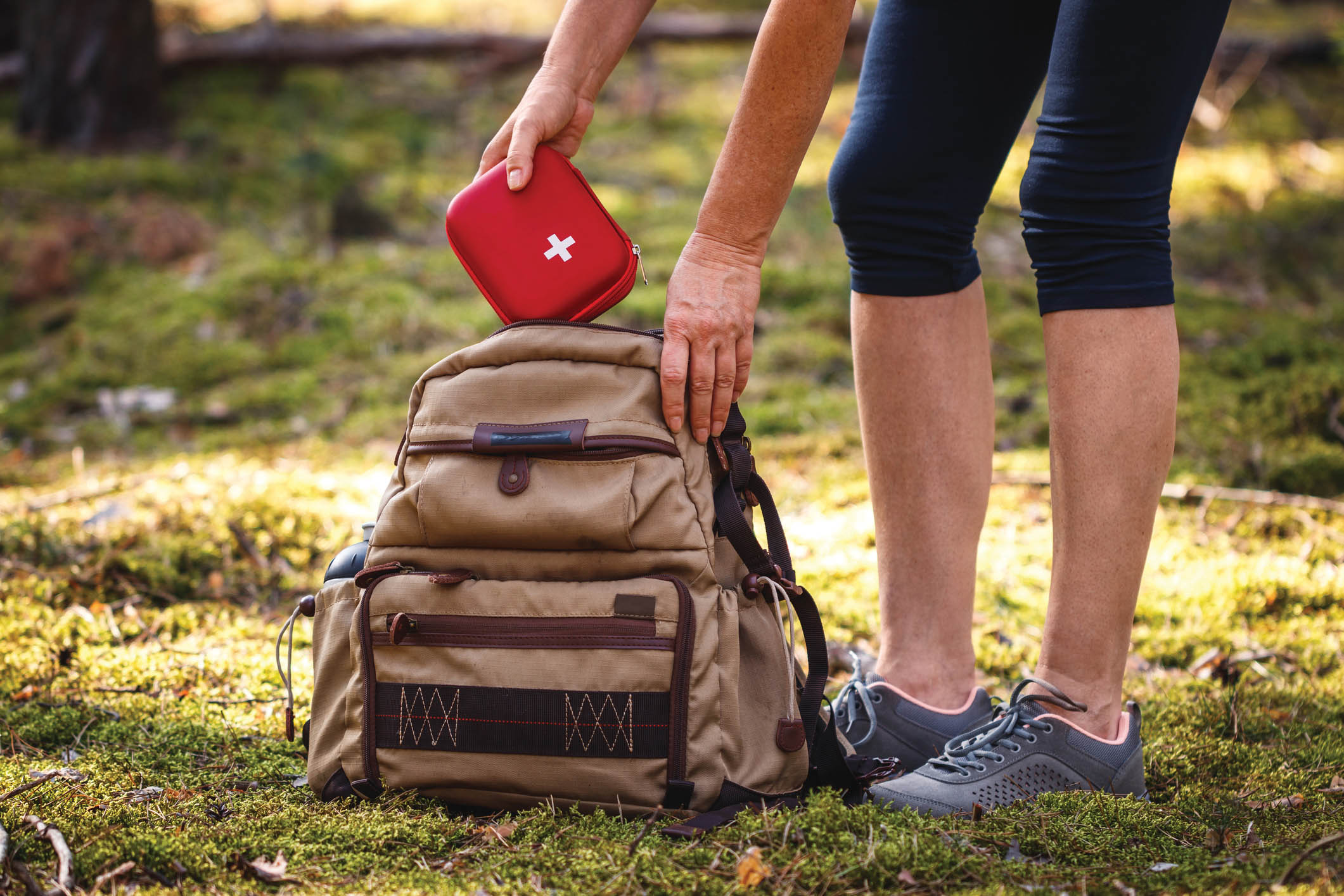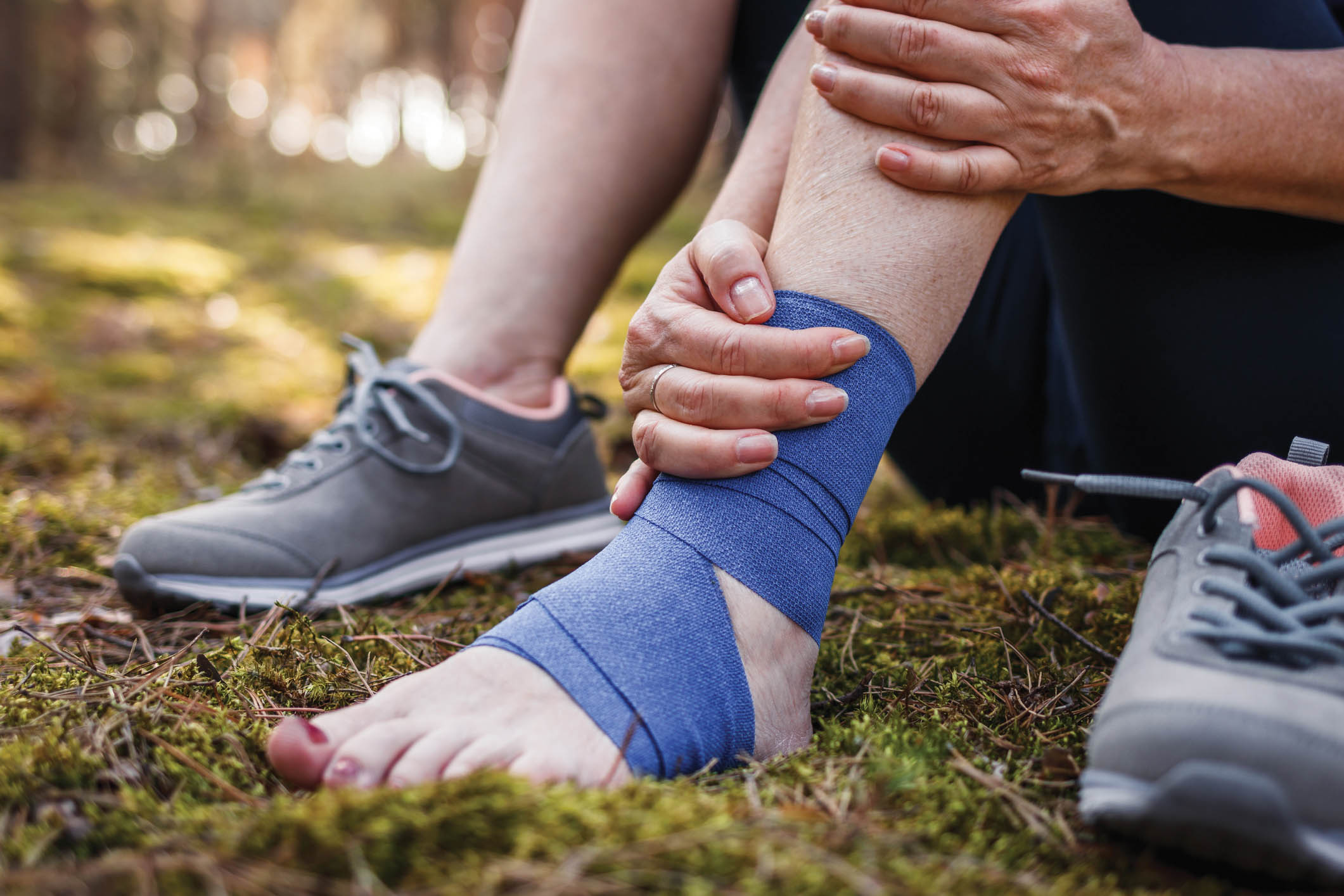What to Do If Injured in the Wilderness

When preparing for a camping or hiking trip, packing a first-aid kit is crucial. The second thing to remember is if you get injured while in the wilderness, you must stay calm, regardless of the injury’s severity. Fear and frustration only make things worse as moving around can aggravate injuries and start a downward spiral into panic.
Mike Stephenson, a retired firefighter who spent the last 15 years teaching emergency first aid, shares some key things to remember if you’re injured in the wilderness.
Extremity Injuries
Stephenson says the most common injuries for adults are extremity injuries, which include things like sprains or twisted ankles.
While training won’t necessarily prevent all injuries, Stephenson says training helps decrease the likelihood of injuries. Having the right equipment and conditioning is key to avoiding these injuries, along with having the right type of shoes.
“I will absolutely spend the money to get good shoes, especially from a reputable dealer like REI,” Stephenson says. “Having the correct shoes goes a long way to prevent injuries.”
Stephenson also recommends having a walking stick or trekking pole.
“(They) provide extra leverage (and) help to probe for anything unstable on the path ahead of you,” Stephenson says. “Most extremity injuries happen when you are going downhill; you step on loose rock and tend to fall, unable to catch yourself as you slide.”
Blisters
Another common injury that can be easily avoided is blisters.
“You can pre-treat to prevent blisters just by having good footwear and fresh socks,” Stephenson says. “You want good tires on your car, so you (also) want good footwear for your feet.”
For pre-treating blisters, you need to use something thin and stretchy, such as kinesiology tape (KT), which is available online or at any pharmacy. However, Stephenson says if you feel a spot where you might be developing a blister, you should stop and treat it, even if there is no actual blister present. Also, make sure to clean the spot with an alcohol wipe before putting on KT or moleskin, which is another good option for treating blisters.
Ticks
With the hot Texas weather, Stephenson says ticks are in season now and love cedar trees.
“They particularly like areas where your clothing is tight and there’s lots of elastic, (like) underwear, socks, places like that,” Stephenson says.
If you have a tick bite or suspect you have a bite, you need to get tested for Lyme disease, which is easily treatable. Though all it takes is a simple blood test, you still need to ask the doctor to check for Lyme disease specifically.
Being Lost

Unfortunately, Stephenson says a common result of being injured is getting lost.
“If there’s another person with you, can you send the other person for help? Can they help you make it back to the trailhead?” Stephenson says.
Stephenson says if you are lost, it is best to avoid bushwhacking because you can easily become disoriented if you are inexperienced. He also warns that using a compass is a lot less straightforward than you think, so be careful if you plan to use a compass as your backup for directions.
Additionally, while most phone plans have cell reception anywhere, there are some areas, such as Barton Creek Greenbelt, where reception is iffy at best. Stephenson remembers when he would go to the Greenbelt for rescues and his $7,000 radios wouldn’t even work to pick up a signal.
“It’s the type of terrain (the Greenbelt) is, and it’s down lower than everything else. Our radios couldn’t reach the repeater towers,” Stephenson says. “But we knew that, so we would send enough people where someone could walk out and relay the message for us.”
But even knowing how to drop a pin on Google Maps can be enough help if you are lost because you can then call emergency services, give your latitude and longitude, and help will be on the way.
Be Prepared
Getting injured is scary, whether it happens in your backyard or in a nearby state park. But with these key steps, you can be more prepared for anything that comes your way.







